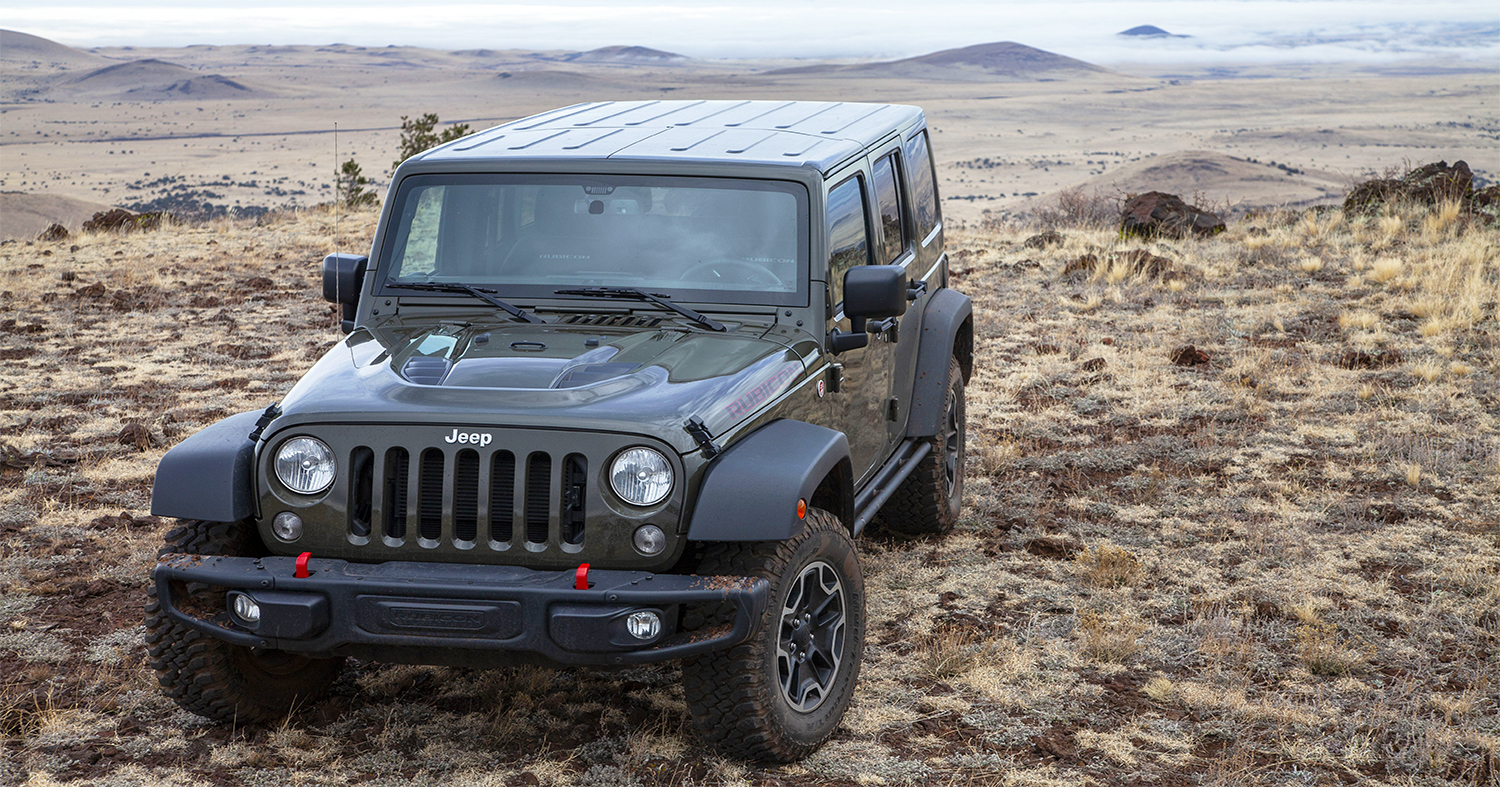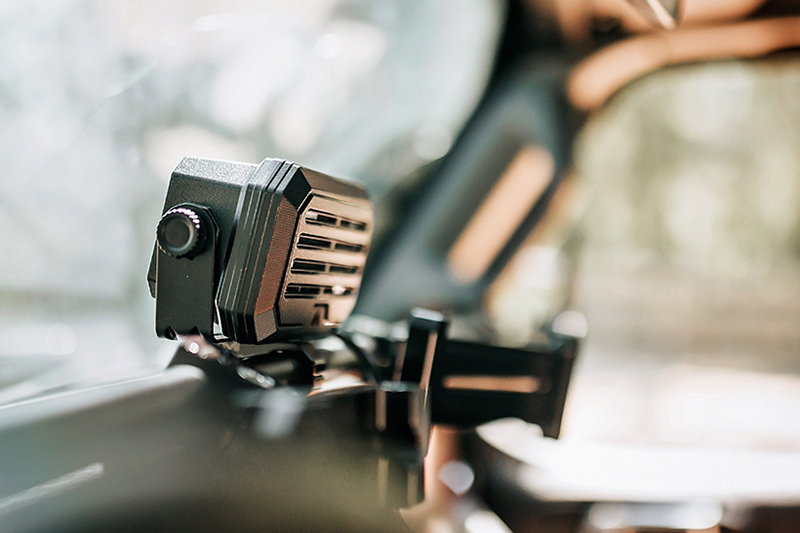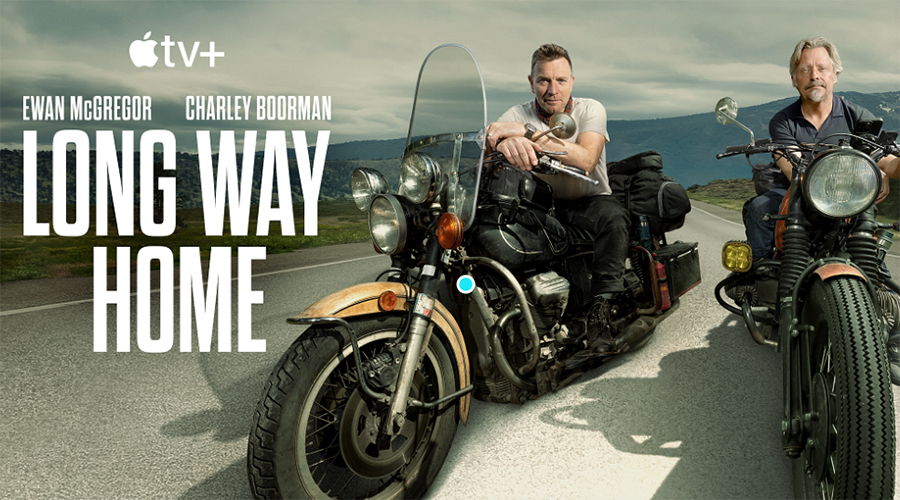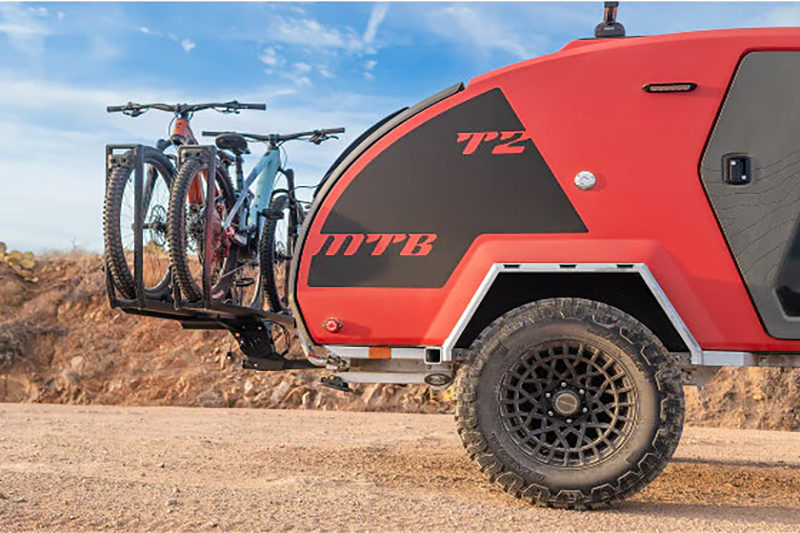Does America produce a vehicle that’s a worthy expedition traveler?
I remember the exact moment the realization hit me.
It was a few thousand miles into a 35,000-mile long-term review of a 2010 Jeep Wrangler Rubicon Unlimited; while on my way north from Tucson to hunt elk above the Mogollon Rim. The cargo area of the Wrangler was loaded with gear; I was cruising comfortably between 40 and 60mph up Arizona’s tortuous Highway 191, after an easy 80mph blast eastward on I-10. The Rubicon had already proven its incomparable four-wheel-drive prowess in Redington Pass, outside Tucson, dawdling up obstacles that had always seriously challenged my FJ40. Now it was displaying the other end of its versatility.
Coincidentally, Roseann and I had recently returned from Africa, where we’d driven a Land Rover Defender 110 on a 3,000-kilometer loop around the backcountry of Tanzania and southern Kenya, with the ultimate goal of delivering a package of tents, binoculars, and GPS units to a group of Maasai game rangers we’d supported and trained for several years. The Defender’s 300Tdi turbodiesel engine and five-speed R380 transmission provided decent power and excellent fuel economy, and its all-coil suspension and Koni Raid shocks soaked up the worst that Tanzania’s optimistically labelled B roads could throw at it. The rectangular cargo area easily swallowed a month’s supplies. It had shown once again why the (original) Defender remained a top choice for serious expedition travel.
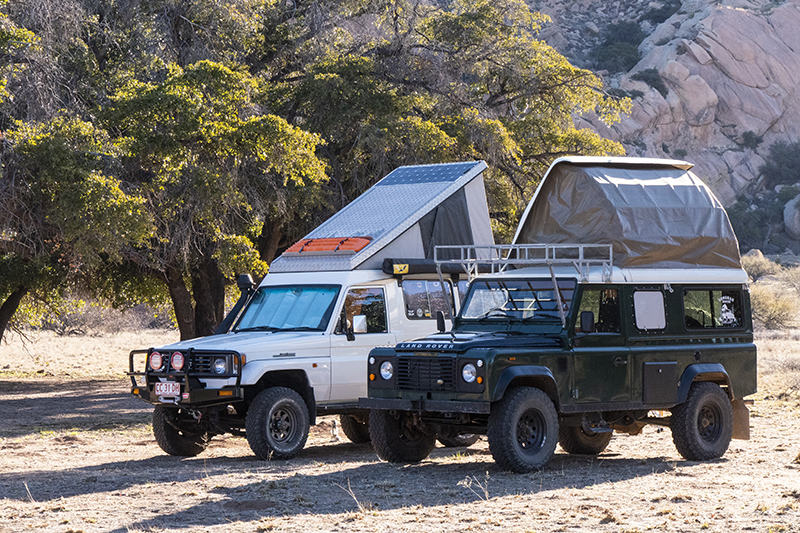
Back in that Wrangler with a rifle case in the back seat, I was marveling at its breadth of capability and musing on the only disappointing aspect of the vehicle: its 3.8-liter gasoline V6, which boasted both insufficient power and poor fuel economy (the former, at least, would be solved by the later 3.6 Pentastar engine). It was then I thought to myself: With a turbodiesel engine and heavier springs this would be a world-class expedition vehicle—America’s very own world-class expedition vehicle.
So. Just what is an expedition vehicle? Well, honestly, it can be almost anything, and has been, from 29-horsepower Citroën 2CVs to S-type Bedford lorries and Unimogs. But there’s a sweet spot—a particular window of perfect balance in overall size, cargo capacity, powertrain, suspension, capability, durability, and reliability that has traditionally made a select few vehicles the repeated choice for extended, self-supported journeys far from civilization.
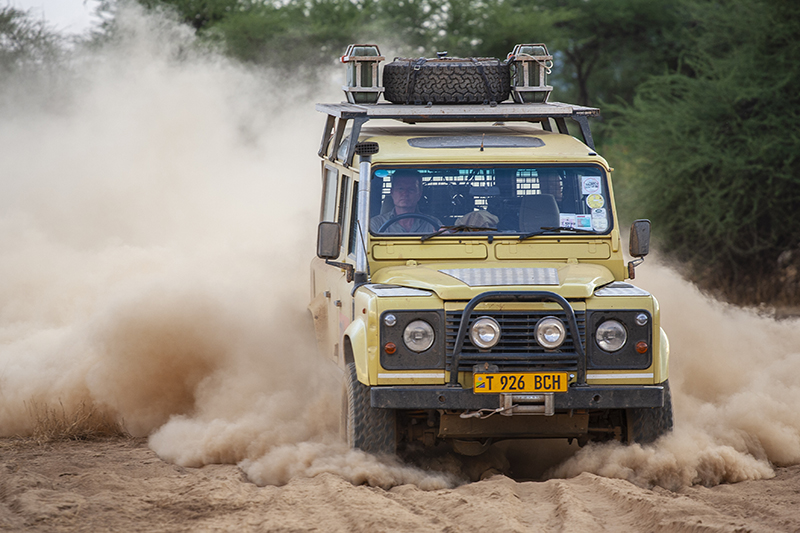
Traditionally, this sweet spot has been exemplified by the long-wheelbase Land Rover, whether Series or the later Defender; the Toyota Land Cruiser in its own long-wheelbase form—40, 60, or 70 Series; the under-appreciated four-door Nissan Patrol, and, more recently, the long-wheelbase Mercedes Gelandewagen. All these vehicles are constructed with separate bodies over fully-boxed chassis. They’re specced to carry three quarters of a ton or more of cargo, but small enough to fit inside a standard shipping container and, if bogged, recover with a shovel and sand mats—and perhaps a few friendly locals. Their cargo areas are rectangular and suitable for packing with Zarges cases or Wolfe boxes, or for the installation of cabinets or even pop-top roofs. They are easy to work on with hand tools, and benefit from robust factory parts support in remote regions. They retain solid axles front and rear for strength and simplicity and combine reasonable to excellent four-wheel-drive capability with (let’s be frank) poor to reasonable tarmac comfort and speed, the last two items being very low on the list of priorities.
Finally, and of much higher priority, they are available with diesel or turbodiesel engines.
Why diesel? Several reasons. First, diesel and turbodiesel engines, with their torque peaks well down in the engine’s rpm range, are quite simply superior for use in situations requiring four-wheel drive. Second, in most areas of the world diesel fuel is significantly cheaper than petrol, which, combined with diesel’s superior fuel economy, means reduced costs. Superior fuel economy translates to superior range with a given tank capacity, critical for long no-resupply routes. (Example: Our own 1993 HZJ75 Land Cruiser with the 1HZ diesel averaged 16 mpg in low-range four wheel drive crossing the 1,000 dunes of the Simpson Desert in Australia. Given its 71-gallon capacity, that gives us a stupendous 1,100-mile range—in the worst conditions.)

Diesel fuel is also much more stable than gasoline, a benefit when you’re sourcing fuel from drums that have been sitting outside a shack in Urambo for who knows how long.
Last, but far from least important, diesel fuel is safer than gasoline. Contrary to what many people think, it’s not the liquid in gasoline or diesel that burns, but the vapor, and for a fuel to vaporize, the air temperature has to be above a certain point. For gasoline, that temperature is -45ºF (-43ºC). At any temperature above that rather chilly mark, gasoline vapor is flammable. Diesel, on the other hand, does not begin to vaporize in temperatures lower than 120ºF (52ºC)—creating a massive safety margin.
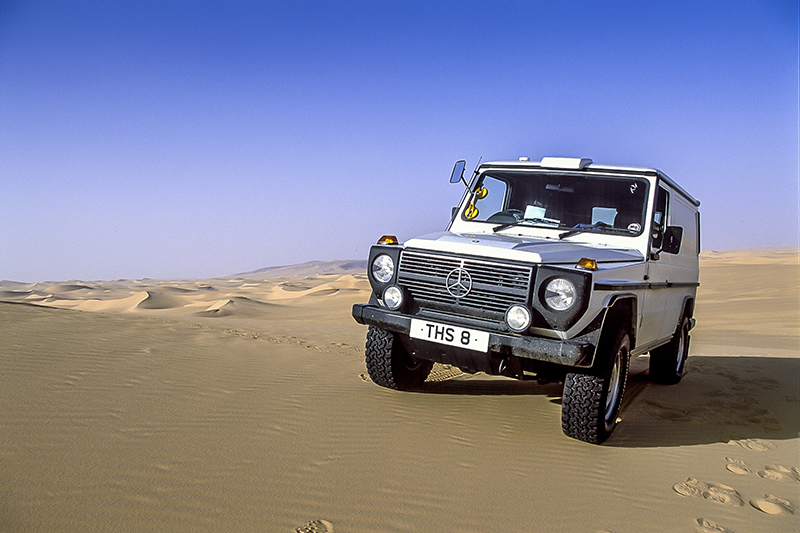
Now let’s fast-forward ten years, when I was handed the keys to a brand new (but sadly short-term) Jeep Gladiator pickup—powered by a 3.0-liter V6 turbodiesel engine. The Gladiator, while not conforming to our template above, is within inches of the size of the Land Rover 130 dual-cab Hi-Cap pickup, an expedition legend in its own right. And it was effortless to imagine how this same engine will transform a Wrangler Rubicon Unlimited. In the Gladiator I averaged over 23 mpg in mixed road and trail driving and hit 31 at a steady 65mph. It should do even better in the Wrangler. And even though it is only available with an (excellent) ZF eight-speed automatic, the Gladiator displayed all the advantages of the diesel engines I’m used to in Land Cruisers and Land Rovers—except with roughly twice the horsepower and torque.

Of course, there’s a glaring issue with our Ecodiesel Wranglers or Gladiators in terms of worldwide exploration, and that is their requirement for Ultra Low Sulphur Diesel fuel (ULSD), which is still very far from worldwide availability. However, the current status of ULSD is remarkably similar to the situation with unleaded gasoline in the 1970s, the availability of which began in the U.S. but eventually spread around the world. I’m willing to bet ULSD will become increasingly available as well, until it is the norm.
It’s also true that the Jeep’s DOHC, 24-valve VM Motori engine is far more complex than the 1HZ in our Troopy, or Land Rover’s 300Tdi. But, while the naturally aspirated 1HZ is still available in African Land Cruisers, later Land Rover and Toyota turbodiesels are also much more complex—such is simply the way of the world now.
What about other comparisons between the Wrangler/Gladiator and its historic counterparts? When Tom Sheppard generously invited me to co-author the 2016 edition of his overlanding bible, the Vehicle-dependent Expedition Guide, we constructed a comparison chart.
• In terms of off-road capability, the Rubicon version of both Jeep models has no peer. The combination of low-range gearing, front and rear diff locks, all-coil suspension, and a driver-disconnectible front anti-roll bar puts the Jeep solidly at the front in that comparison.
• Likewise, on-road comfort and cruising speed is a Wrangler/Gladiator strong point compared to the rudimentary “comforts” of the Defender and Land Cruiser, and even the basic G-Wagen configurations that are the standard for expedition use.
• On the other hand, the Wrangler Unlimited is down ten percent on cargo volume compared to the Defender 110 or the G-Wagen, and a full 20-percent below the cavernous Troopy. It is also not as conveniently configured for modification or storage.
• Perhaps more critically, the Wrangler Unlimited Rubicon’s load capacity of just 900 pounds pales before the Land Cruiser’s 2,100 pounds, the Defender’s 2,130, and the G-Wagen’s 2,300. That severely limits the extent of modifications and equipment such as auxiliary fuel tanks, adequate water storage, and camping gear available to the Wrangler owner, and the Gladiator diesel is similarly underwhelming in terms of load capacity.
However, were I to consider employing a Wrangler Unlimited or Gladiator Rubicon for an expedition requiring sufficient equipment and supplies for extended no-resupply sections, I would note that the non-Rubicon versions of both models retain significantly higher GVWR ratings, despite having identical powertrains, brakes, differentials, and transmissions. This leads me to believe that the chief reason for the lower rating is softer spring (and, most certainly, shock) rates on the Rubicon models, to enhance compliance. The effects of the disconnectible anti-roll bar likely figure into this as well, despite the fact that it will only disengage at low speeds. Therefore, I would not hesitate, in an AS A REPRESENTATIVE OF THIS MAGAZINE I AM NOT SUGGESTING YOU DO SO sense, to install firmer springs and shocks on either vehicle and judiciously calculate a usefully higher GVWR. It would still be well below that of the other three vehicles we looked at here but would help considerably.

So . . . would I consider containerizing a Wrangler Rubicon Unlimited diesel, shipping it across the sea, and taking it on an extended journey in the developing world—say, for delivering equipment to a group of Maasai game rangers?
In a heartbeat. It is truly America’s own world-class expedition vehicle.
OutdoorX4 Magazine – Promoting responsible vehicle-based adventure travel and outdoors adventure


